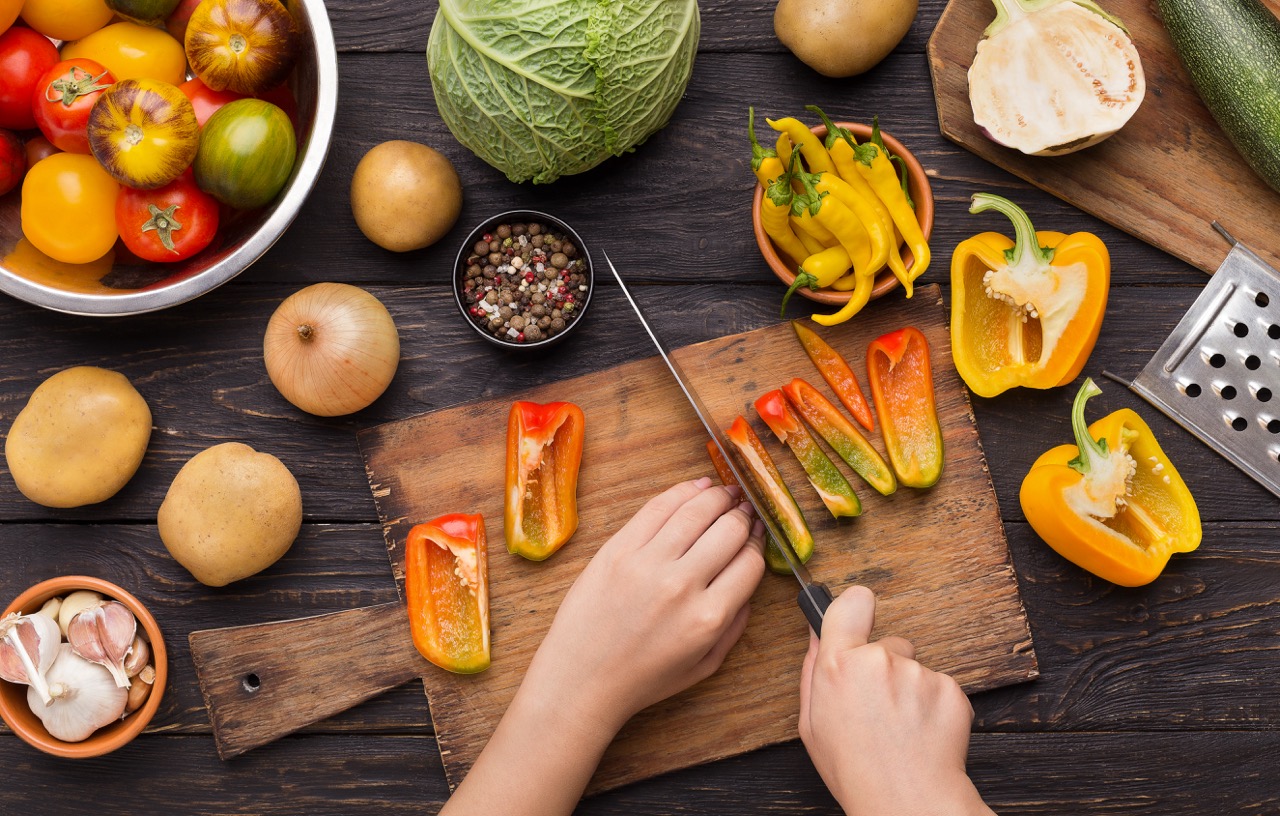A sharp knife is a cook’s best friend. It transforms the mundane task of prepping ingredients into an enjoyable and efficient process. But wielding a knife with confidence and precision requires more than just a sharp blade; it demands proper technique. This is where knife skills come in.
Think of knife skills as the foundation of culinary artistry. They encompass everything from how you hold the knife to the specific movements you use to create various cuts. Mastering these skills not only elevates your cooking efficiency but also enhances the presentation and even the flavor of your dishes.
Why Knife Skills Matter
Before we dive into the techniques, let’s explore why honing your knife skills is crucial for every home cook:
- Safety First: A sharp knife, when used correctly, is actually safer than a dull one. Proper technique minimizes the chances of the blade slipping and causing injuries.
- Efficiency in the Kitchen: Good knife skills translate to faster and more efficient food preparation. Imagine slicing through vegetables with ease instead of struggling with uneven cuts.
- Enhanced Presentation: Uniformly cut ingredients cook evenly and look more appealing on the plate. Whether it’s a simple salad or an elaborate dish, presentation matters.
- Improved Flavor and Texture: Believe it or not, the way you cut your ingredients can affect their taste and texture. Properly diced vegetables release flavors more effectively and cook more evenly.
Mastering the Fundamentals
Now, let’s delve into the essential knife skills every home cook should master:
Choosing the Right Knife:
While there’s an array of specialized knives available, a few essentials will cover most kitchen tasks:
- Chef’s Knife: This versatile knife is your workhorse, ideal for chopping, slicing, and dicing a wide variety of ingredients.

- Paring Knife: Perfect for intricate tasks like peeling, trimming, and coring fruits and vegetables.

- Serrated Knife: Designed for slicing through bread and other crusty items with its saw-like edge.

Grip and Stance:
- The Pinch Grip: For smaller knives like the paring knife, pinch the blade between your thumb and forefinger just above the handle. This provides control for precise cuts.
- The Handle Grip: For larger knives like the chef’s knife, wrap your fingers around the handle with your index finger resting on the bolster (the junction between the blade and the handle).
- Stance: Maintain a comfortable stance with your feet shoulder-width apart and your cutting board positioned at a comfortable height.
Guiding Hand:
- The Claw Grip: Curl the fingertips of your non-dominant hand inwards, using your knuckles to guide the knife while protecting your fingertips.

- Maintain Contact: Keep the tip of the knife in contact with the cutting board as you slice, using a rocking motion for larger items.
Essential Cutting Techniques:
- Chopping: This technique involves cutting food into rough, irregular pieces. It’s often used for ingredients that will be further processed or cooked for a long time.
- Dicing: Dicing produces small, uniform cubes of food. The finer the dice, the faster the ingredient will cook and the more evenly it will distribute flavor in a dish.
- Mincing: Mincing creates very fine pieces, almost a paste. It’s often used for garlic, herbs, and other ingredients that need to be well incorporated into a dish.
- Slicing: Slicing produces thin, flat pieces. It’s used for everything from bread to vegetables to meat. The thickness of the slice can be adjusted depending on the desired outcome.
- Julienne: This technique creates thin, matchstick-like strips. It’s often used for vegetables that will be stir-fried or used as a garnish.
- Brunoise: Brunoise is a very fine dice, often used for garnishes or to add texture to sauces.
Sharpening Your Knives:
- Honing Steel: Use a honing steel regularly to maintain the edge of your knives. This aligns the microscopic teeth of the blade, keeping it sharp between sharpenings.

- Sharpening Stone: A sharpening stone is used to actually remove metal from the blade and create a new sharp edge. This should be done less frequently than honing.

Practice Makes Perfect
The key to mastering knife skills is practice. Start with basic techniques and gradually work your way up to more advanced cuts. Don’t be afraid to experiment with different ingredients and recipes.
Here are some tips to accelerate your learning:
- Take a Knife Skills Class: Many culinary schools and cooking stores offer knife skills classes. These classes provide hands-on instruction and personalized feedback from experienced chefs.
- Watch Instructional Videos: There are countless online resources available, including YouTube videos and cooking websites, that demonstrate various knife techniques.
- Practice with Different Ingredients: Each ingredient presents unique challenges. Practice cutting a variety of vegetables, fruits, and meats to develop your skills.
- Focus on Consistency: Aim for uniform cuts, as this ensures even cooking and enhances the presentation of your dishes.
- Be Patient: Mastering knife skills takes time and dedication. Don’t get discouraged if you don’t see results immediately. With consistent practice, you’ll become a more confident and skilled cook.
Conclusion
Knife skills are an invaluable asset for any home cook. By mastering these techniques, you’ll not only improve your efficiency and safety in the kitchen but also elevate your culinary creations. So grab your knives, get practicing, and unleash your inner chef!




